What is radiculopathy (pinched nerve) and how is it treated?

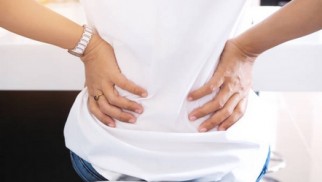
Why has the diagnosis "radiculitis" disappeared from the terminology of physicians, the symptoms of which are so colorfully and vividly described by the patients who visit the doctor? So, let's start with the fact that the name "radiculitis" comes from the Greek term "radix" - nerve root. The ending "it" - describes the inflammatory process.
Short information about radiculopathy (pinched nerve)
Even 50 - 70 years ago, doctors believed that pain in the neck, lower back or other parts of the back was associated with inflammation of the nerve roots extending from the spinal cord. Therefore, the treatment consisted of taking antibiotics in combination with anti-inflammatory therapy. But as we studied the problem, it turned out that the inflammatory process for the roots with the development of back pain is not typical, and all painful and unpleasant sensations are associated with irritation, compression of nerve fibers. Therefore, today the term has been replaced by a more correct one - radiculopathy (or in another way - radicular syndrome) widely known as pinched nerve. Of course, if a patient complains about sciatica, the doctor will understand what it is about, but they will write a completely different diagnosis in the patient’s history.
And one more thing: not every back pain is associated with radicular syndrome, the cause may be other tissues - muscles, bones, joints, etc. In this case, we are talking about dorsopathies. This is a group of diseases based on degenerative-dystrophic changes in the spine itself and its surrounding structures (soft tissues).
For ease of understanding in the text, we will sometimes use the term "radiculitis", describing changes in tissues.
Causes of sciatica
Radiculopathy is not a disease, but a neurological syndrome, a group of specific human complaints that arise from irritation of one or more roots extending from the spinal cord. The roots strictly correspond to a specific vertebra, located directly next to it. The root extends from the spinal cord in the area of the small intervertebral foramen, which is surrounded by ligaments, choroid plexuses and certain muscles. If there are changes in any of these elements (bone or soft tissue), the root can be irritated or compressed.
Accordingly, radiculopathy of one or another localization, and the resulting pain syndrome are associated with the location of a certain root.
Why do symptoms of sciatica arise, what problems can provoke pain and additional complaints? There are a number of factors:
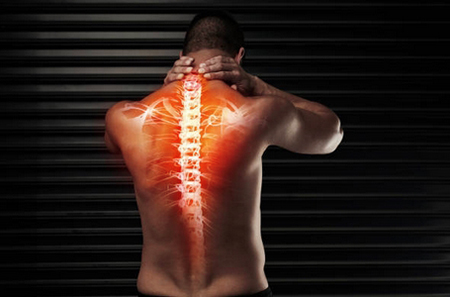
- Various injuries in different parts of the back (from the neck to the sacrum (tailbone);
- Muscle weakness from inactivity and lack of training;
- Hormonal, metabolic disorders that negatively affect the bone and ligamentous elements, muscle tone;
- Age-related processes associated with degeneration and dystrophy (progression of osteochondrosis);
- Chronic inflammatory processes;
- Various types of posture disorders (curvatures, both in the form of a hump and lateral deviations);
- Complications of operations on the vertebrae;
- Gravitational load, hard physical labor, weight lifting;
- Congenital or acquired anomalies in the structure of the spine;
- Tumor lesions in the area of the vertebrae and surrounding tissues;
- A sharp narrowing of the spinal canal and intervertebral due to the displacement of vertebrae from their usual place;
- The formation of hernias or protrusions in the area of the intervertebral discs.
The most common causes of radiculopathy are precisely progressive changes due to osteochondrosis and changes in the intervertebral discs. Gradually, the discs become thinner, they lose their elasticity, if you do not take measures, they gradually begin to collapse, deform, conditions are created for the formation of hernial protrusions.
A sedentary lifestyle and problems with posture are some of the factors in the development of sciatica.
Symptoms of sciatica
Typically, symptoms of sciatica appear as disc protrusions or hernial protrusions form. They are formed in the area of the intervertebral disc, which is most thinned in the area of the annulus fibrosus. Initially, while the ring is intact, protrusions are formed, and when the fibrous membrane is ruptured, a hernia is already formed.
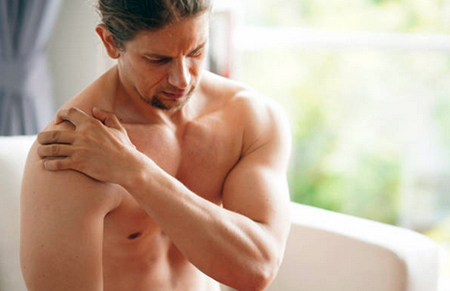
The bulge can press on the nerve roots that run along the sides of the spine to the right and left. Initially, only the sheaths of the nerves are irritated, but if the process is not slowed down, all the nerve roots will gradually be compressed, which leads to the so-called discogenic radiculopathy.
For radicular syndrome, two stages of development are typical, and the symptoms differ:
- First, or neurological stage. It is characterized by increased sensitivity of tissues in the area of the affected root, periodic sharp pain, protective muscle tension, which is why people are often forced to take an unnatural posture. When pressure is applied to certain (paravertebral) points, pain is felt.
- Second, or neurotic stage. For this stage, a typical violation of sensitivity in the area that "serves" the affected root. Protective muscle tension and pain persist (they even intensify). For different types of radiculopathy, specific symptoms are typical.
The most common symptom for all radiculopathies is pain. It can be from mild to significant when it is almost impossible to move your arms or legs, or bend your back.
Cervical (neck) radiculopathy is manifested by acute pain syndrome in the morning. There is a soreness of the neck, radiating to the shoulder and arm, headache, stiffness of the neck muscles and with their soreness, a feeling of numbness, chill or tingling, crawling creeps. The skin in the affected area is dry and cold, and may peel off.
Thoracic (chest) radiculopathy is characterized by pain behind the sternum (breastbone), between the shoulder blades along the lower ribs, and may have a shingles in nature. Lumbago can be in the armpit or shoulder, middle finger. Weakness of the shoulder muscles, especially the triceps, is also observed. Often, the pain resembles an attack of angina pectoris or heart attack.
Lumbosacral (lower back) radiculopathy is described as severe pain in the buttock that extends down the thigh to the foot. Low back pain can shoot in the leg up to the big toe. Against the background of pain and muscle spasm, mobility is impaired - sudden movements or inclinations respond with an acute pain attack. The sensitivity on the affected side of the leg decreases, the muscles weaken.
Radiculopathy treatment
When typical symptoms appear, you should not self-medicate, you can only worsen the situation. Immediate medical attention is required.
Diagnostics
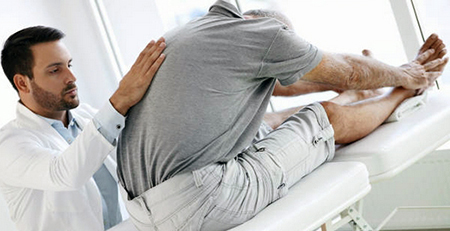
The basis of diagnosis is a detailed conversation with the patient and clarification of all symptoms, including the most insignificant ones. It is imperative to describe to the doctor the type of pain, its severity and duration, as well as all accompanying problems - numbness, crawling creeps, burning of the skin.
If necessary, the doctor prescribes an X-ray, which determines the deformation of the vertebrae and the severity of the degenerative-dystrophic process, possible displacement of the vertebral bodies.
To detect protrusions of discs or hernias, an MRI scan of the corresponding part of the spine is indicated, and electromyography is performed to determine muscle tone.
Modern methods of treatment
Treatment methods are selected individually, taking into account why, where and how it hurts, what complications there are and in what form, at what stage the disease is. In addition, there is a division into the treatment of acute pain syndrome and its chronic form.
Treatment of acute pain
If the pain is relatively moderate, it is worth partially restricting movement, and if the pain is very severe, complete rest for the affected area for several days is appointed.
- The affected spine is fixed to limit mobility with the help of special orthoses (special corsets).
- Recommended medicines include anti-inflammatory drugs (NSAIDs such as Ibuprofen, Nimesulide), muscle relaxants (Tizanidine, Mydocalm, etc.), diuretics and, if necessary, a short course of corticosteroids (must be appointed only by a doctor). A doctor in specially equipped rooms can perform spinal block (A spinal anesthesia is the administration of a drug with an analgesic effect (reversible blockade of nerve impulse transmission) by injection). To prevent the transition of pain to permanent, chondroprotectors (means that restore cartilage tissue) may be recommended from this period.
As the pain subsides, after about 5 to 10 days, the treatment is supplemented with non-drug treatments. These include:
- Exercise therapy, in which the loads are selected according to the patient's condition and exercise tolerance, are carried out systematically and regularly;
- Manual therapy, which helps to eliminate blocks in the area of the joints of the spine, muscle spasms, corrects pathological spinal deformities, improving the general condition.
- Traction therapy (or, in other words, flexing) for anesthetizing the lesion site, reducing muscle tone and relaxing them in the affected area, reducing the pressure inside the discs, which eliminates compression of the nerve roots;
- Physiotherapy as a complex effect for back problems;
- Acupuncture to eliminate pain syndrome and muscle spasms, stimulate the work of the affected nerves by acting on biologically active points, especially in reflex syndromes (today the technique has been modified and used in the form of pharmacopuncture, with the introduction of drugs into the area of trigger points so that the effect is maximal) ;
- Hirudotherapy - the use of medicinal leeches.
Techniques are selected individually, taking into account all possible contraindications and related factors that may affect the results.
Important! Manual therapy is contraindicated in the presence of severe osteoporosis (sparse bones), spondylosis (disorders in the intervertebral discs with limited mobility); if there is abnormal mobility in the area of individual segments of the spine; there are congenital defects of the vertebrae or the spinal cord itself.
Treatment for chronic pain syndrome
If the pain is prolonged, antidepressants can be prescribed, drugs with muscle relaxant (relaxing muscles), sedative effect are preferred. They are combined with the same non-drug treatment methods as in the acute period, combined at the doctor's choice. The methods of treatment are supplemented with a psychotherapeutic course and treatment in a specialized rehabilitation centre.
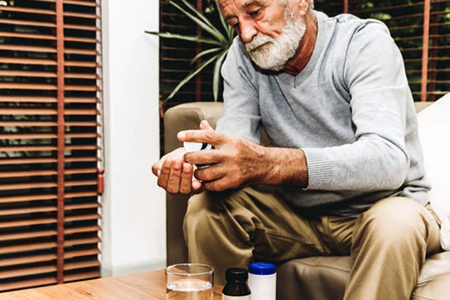
Surgical treatment is also possible, but there must be clear indications for it. Among the absolute indications - compression of the nerve roots with the formation of partial paralysis of the foot, impaired sensitivity in the genital area and rectum, disorder of the pelvic organs. Relative indications for surgery - if conservative therapy does not give an effect for 6 to 12 months. It is important to understand that the treatment will not end with the operation, this is only one of the steps in the long rehabilitation period. After the intervention, patients undergo long-term recovery, which depends on the extent of the intervention.
All of the above methods, except for acupuncture, and then, only in the hands of a true specialist, basically have a symptomatic approach and all influences are aimed at local work with the place of decompensation, i.e., in fact, the struggle occurs with the protective adaptive processes.
Let us examine this with an example of a degenerative-dystrophic process with the formation of a herniated intervertebral disc, which compressed a nerve and led to radiculopathy, with the entire palette of its clinical symptoms. What is our smart body doing at this moment? It:
- Includes protective mechanisms, in the form of a local muscle spasm, to temporarily restrict movement in the affected area;
- Redistributes the load to other parts of the spine and the entire musculoskeletal system in order to relieve the affected segment;
- Releases specific inflammation enzymes that irritate pain receptors, cause pain, and thus signaling that a breakdown has occurred in the body;
- Starts the processes of proliferation and regeneration, i.e. healing.
The implementation of these processes takes time, sometimes quite long. Everything is very individual and depends on a combination of many factors, such as age, gender, profession, the presence of concomitant diseases, lifestyle, physical fitness, etc. The success of the body's self-healing depends on this. A person in the modern world does not have time for this, and besides, pain makes him act and he/she goes to the doctor, and the doctor, with all confidence, responsibility and a true desire to help, begins to apply the entire arsenal of the above means and methods. And yes, it really helps someone, especially if the person is young, physically prepared and there is enough reserve in his body.
But often, six months or more pass, but the pain does not go away, many undergo surgery, there is a temporary relief, but the disease inevitably becomes chronic. And a person lives with periods of remission and exacerbations, fear of a new attack of pain is formed, which significantly reduces the quality of life and can lead to disability.
Why is this happening? A because the true cause of the imbalance in the body, due to which the spinal motion segment was overloaded and the hernia formed, was not recognized and revealed, and the treatment vector is aimed at working with the consequence, i.e. all treat the hernia, not the cause of its formation, hence the unsatisfactory result. While, most often, the real reason lies in the violation of postural balance in the body, due to:
- Dysfunctions of the stomatognotic system (congenital malocclusion, loss of chewing teeth, unsuccessful treatment and prosthetics, dysfunction of the temporomandibular joint, etc.);
- Suffered whiplash injury (road accident, fall from a bicycle, snowboard, even without visible serious damage);
- Malfunction and overload of the oculomotor muscles, various visual impairments, even in incorrectly fitted or broken glasses;
- Consequences of damage to ligaments, fractures and dislocations;
- Cicatricial adhesions after operations such as cholecystectomy, appendectomy, caesarean section, etc.
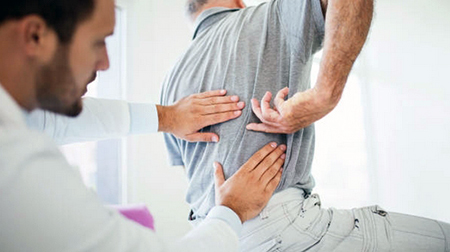
Therefore, for effective treatment, it is necessary to identify the leading problem in the complex chain of events leading to overload and decompensation in the body.
And here the leading place is occupied by osteopathy, which considers a person as a single biomechanical system, the constituent parts of which - bones, muscles, ligaments, internal organs, vessels, nerves, glands - are interdependent, they are in close interaction. This principle of building the body is very strong, this is due to the ability of our body to long-term and lasting compensation. But if the impact factor is powerful or long-term, leads to local overloads, then the whole system suffers. Therefore, it is very important to find the key dysfunction and correct it, which will allow the body to balance and restore health.
Osteopathy has much fewer contraindications and much wider possibilities, in contrast to manual therapy, and other methods of non-drug treatment. Therefore, it can be used at all stages of treatment, starting with the acute period and severe pain, since the osteopath's arsenal contains many soft techniques that can relieve tension and reduce inflammation without causing additional irritation and irritation of pain. This allows you to reduce the drug load from the first days and thereby reduce the risk of side effects from drugs, as soon as possible to start the main method of treatment - therapeutic exercises.
Prevention of radiculitis at home

The basis for the prevention of pain syndromes and exacerbations is constant, regular exercise therapy and gymnastics, lifestyle changes and the elimination of all provocateurs of pain.
The main role in consolidating the obtained result, in further treatment and prevention belongs to physiotherapy exercises. It is highly recommended for them to be chosen individually by a specialist especially at the beginning of treatment.
FAQ
Are there any effective folk remedies for sciatica?
With various methods of traditional medicine, you need to be extremely careful. They can do more harm than help. Although with radiculopathy it is recommended to protect the affected area from low temperatures, keep the back warm, it is contraindicated to use such techniques as a heating pad, bags of hot salt or sand, various alcohol-based lotions. This will provoke increased swelling in the area of the roots and increase the pain.
Is dog's fur wool belt effective for pinched nerve ache?
No, there is nothing special in dog’s fur that makes such “magical” belts more effective than usual warm clothes for sciatica/pinched nerve.
Post by: Katherina Christen, neurologist, Copenhagen, Denmark
(Updated at Apr 14 / 2024)
Zanaflex articles:
Some of the trademarks used in this Web Site appear for identification purposes only.
All orders are reviewed by a licensed physician and pharmacist before being dispensed and shipped.
The statements contained herein are not intended to diagnose, treat, cure or prevent disease. The statements are for informational purposes only and is it not meant to replace the services or recommendations of a physician or qualified health care practitioner. If you have questions about the drugs you are taking, check with your doctor, nurse, or pharmacist.